Home>Gardening & Outdoor>Landscaping Ideas>How To Train A Puppy To Pee On A Grass Pad
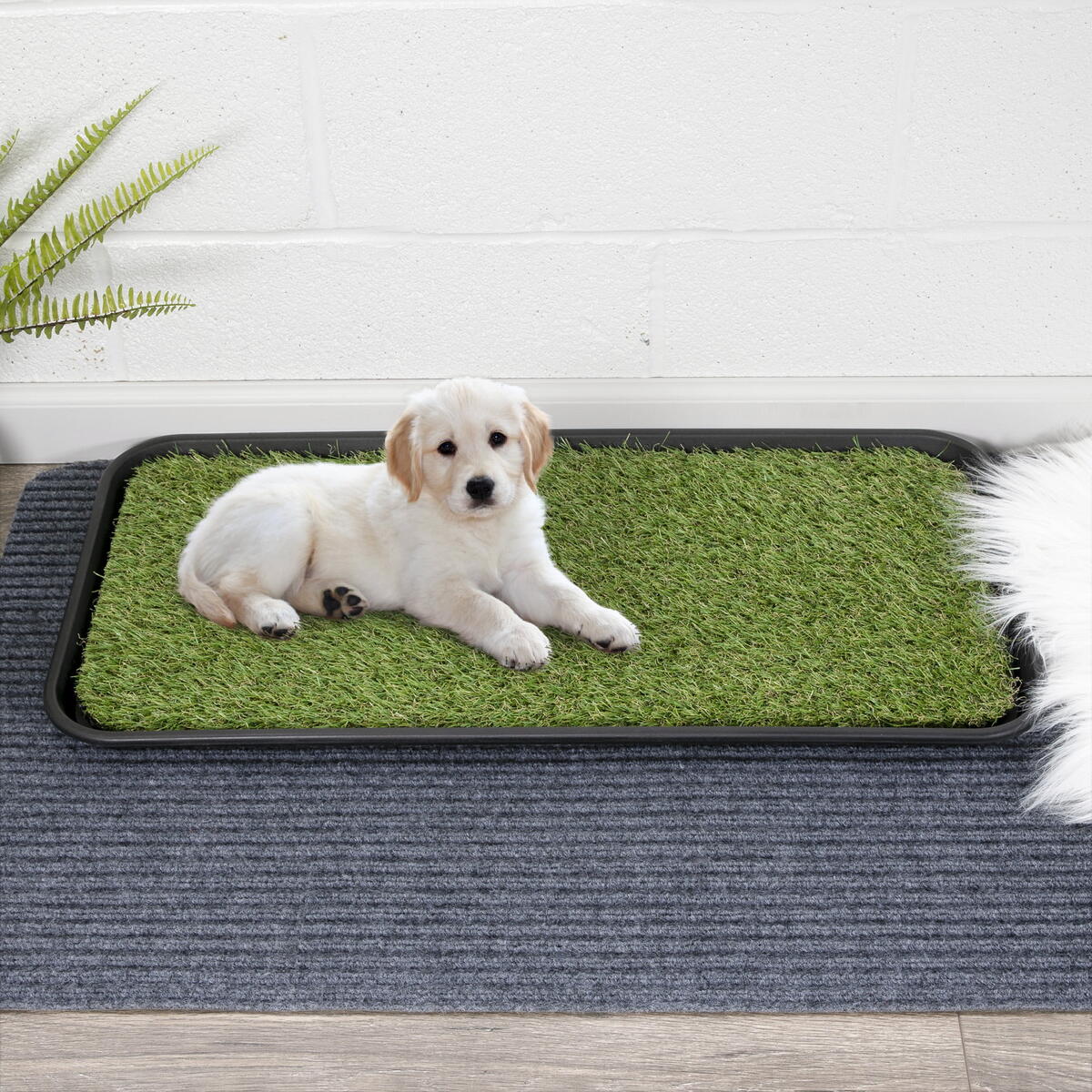

Landscaping Ideas
How To Train A Puppy To Pee On A Grass Pad
Published: January 26, 2024
Learn effective landscaping ideas to train your puppy to pee on a grass pad. Discover step-by-step tips for successful puppy potty training.
(Many of the links in this article redirect to a specific reviewed product. Your purchase of these products through affiliate links helps to generate commission for Storables.com, at no extra cost. Learn more)
Introduction
Training a puppy to pee on a grass pad can be a game-changer for pet owners living in apartments, high-rise buildings, or areas with limited outdoor space. It offers a convenient and hygienic solution for ensuring that your furry friend can relieve themselves comfortably while indoors. This method is particularly beneficial for individuals with busy schedules or those who may have difficulty taking their puppy outside frequently.
The process of training a puppy to use a grass pad involves patience, consistency, and positive reinforcement. By understanding the needs of your puppy and implementing the right techniques, you can successfully teach them to associate the grass pad with a designated potty area. This not only provides convenience for you and your pet but also promotes good potty habits and contributes to a cleaner living environment.
In this comprehensive guide, we will delve into the essential steps and considerations for training your puppy to use a grass pad effectively. From selecting the appropriate grass pad to troubleshooting common issues, this article will equip you with the knowledge and insights needed to navigate this aspect of puppy training. Whether you are a first-time pet owner or seeking alternative potty training methods, mastering the art of training your puppy to use a grass pad can lead to a harmonious cohabitation with your beloved companion.
Key Takeaways:
- Training your puppy to use a grass pad indoors offers convenience and cleanliness, making it perfect for apartment living. By being patient and consistent, you can create a harmonious potty routine for your furry friend.
- Choosing the right location, introducing the grass pad with positivity, and maintaining consistency are key to successful training. Troubleshoot common issues with patience to ensure a smooth transition for your puppy.
Read more: How To Train A Dog To Pee On A Grass Pad
Understanding the Grass Pad
The grass pad, also known as a potty pad or indoor turf potty, serves as a designated area for puppies to relieve themselves indoors. It typically consists of a synthetic or real grass surface that mimics the outdoor environment, providing a familiar and comfortable substrate for your puppy to use for potty breaks. Understanding the key components and benefits of the grass pad is crucial for successful training and seamless integration into your puppy's routine.
Benefits of a Grass Pad
The grass pad offers several advantages for both pet owners and their puppies. Firstly, it provides a natural and appealing surface for puppies to urinate and defecate, catering to their instinctual preference for grass or soil. This can be especially beneficial for puppies living in urban environments or high-rise buildings where access to outdoor green spaces may be limited.
Moreover, the grass pad promotes cleanliness and hygiene within the indoor environment. The absorbent nature of the grass or synthetic turf helps to minimize odors and prevents liquid waste from pooling on the floor, contributing to a more sanitary living space. Additionally, the convenience of having a designated potty area indoors can alleviate the challenges of taking your puppy outside multiple times a day, particularly in situations where outdoor access is restricted.
Types of Grass Pads
Grass pads are available in various sizes and designs to accommodate different living spaces and puppy breeds. Some grass pads feature a disposable grass layer that can be replaced regularly, while others utilize synthetic turf that can be rinsed and cleaned. The choice between real or synthetic grass depends on factors such as maintenance preferences, indoor space constraints, and the specific needs of your puppy.
Furthermore, some grass pads are equipped with odor-control mechanisms and antimicrobial properties to enhance cleanliness and odor management. Understanding the available options and their respective features can help you select a grass pad that aligns with your lifestyle and your puppy's preferences.
Mimicking the Outdoor Experience
When introducing a grass pad to your puppy, it's essential to create an association between the indoor potty area and the outdoor environment. This can be achieved by selecting a grass pad that closely resembles the texture and appearance of natural grass. By mimicking the outdoor experience, the grass pad can effectively convey the message to your puppy that it is an acceptable and familiar place to relieve themselves.
In summary, comprehending the purpose, benefits, and variations of grass pads is fundamental to the successful training of your puppy to use this indoor potty solution. By recognizing the appeal of the grass pad to puppies and the practical advantages it offers, you can approach the training process with insight and confidence, setting the stage for a positive and effective potty training experience.
Read more: How To Clean Grass Pee Pad
Choosing the Right Location
Selecting the optimal location for the grass pad within your living space is a pivotal step in the potty training process. The chosen area should offer accessibility, privacy, and a conducive environment for your puppy to comfortably use the grass pad for their potty needs. Consider the following factors when determining the right location for the grass pad:
Accessibility and Proximity
Choose a location that is easily accessible to your puppy at all times. Placing the grass pad in a central area of your home, such as a designated corner of the living room or a section of the balcony, ensures that your puppy can reach it promptly when nature calls. Accessibility is particularly crucial during the initial stages of training when your puppy is still acclimating to the concept of using the grass pad.
Privacy and Distraction-Free Environment
Puppies, like humans, appreciate privacy when attending to their potty needs. Select a location that offers a degree of seclusion, away from high-traffic areas and noisy environments. This helps create a calm and distraction-free space where your puppy can focus on using the grass pad without external disruptions. Consider areas that are shielded from excessive foot traffic, loud noises, and other potential sources of distraction.
Indoor Climate and Ventilation
The indoor climate and ventilation of the chosen location play a significant role in creating a comfortable and inviting potty area for your puppy. Ensure that the selected space maintains a moderate temperature and adequate ventilation to prevent discomfort for your puppy during potty breaks. Additionally, consider the proximity to windows or doors that can facilitate airflow and natural light, contributing to a pleasant and well-lit environment around the grass pad.
Read more: How To Wash Fake Grass Pee Pad
Floor Protection and Cleanliness
Given that the grass pad will serve as the designated potty area for your puppy, it's essential to consider the impact on the surrounding flooring. Opt for a location with easy-to-clean flooring, such as tile, linoleum, or hardwood, to minimize the risk of stains or odors. In the event of accidental spills or splashes, these surfaces can be swiftly sanitized, maintaining a hygienic living space. Moreover, placing the grass pad on a waterproof mat or tray can provide an additional layer of protection for the underlying floor.
By carefully evaluating these considerations and selecting a location that aligns with the needs and preferences of your puppy, you can establish an ideal setting for the grass pad within your home. This thoughtful approach sets the stage for successful potty training and fosters a positive association between your puppy and their designated indoor potty area.
Introducing the Grass Pad to Your Puppy
Introducing the grass pad to your puppy is a crucial phase in the potty training process, laying the foundation for successful indoor potty habits. This initial introduction aims to familiarize your puppy with the grass pad, establish positive associations, and encourage them to view it as a designated area for relieving themselves. By approaching this step with patience, encouragement, and positive reinforcement, you can effectively guide your puppy toward embracing the grass pad as a comfortable and convenient potty solution.
Familiarization and Exploration
Begin the introduction by allowing your puppy to familiarize themselves with the grass pad in a relaxed and stress-free manner. Place the grass pad in the chosen location and allow your puppy to approach it at their own pace. Encourage natural curiosity by allowing them to sniff, investigate, and walk on the grass pad, gradually acclimating to its texture and scent. This initial exploration helps your puppy become comfortable with the presence of the grass pad in their indoor environment.
Positive Reinforcement and Encouragement
As your puppy begins to interact with the grass pad, utilize positive reinforcement to convey encouragement and approval. Offer verbal praise, gentle petting, and small treats to reward your puppy for showing interest in the grass pad. By associating positive experiences and rewards with the grass pad, you can instill a sense of positivity and comfort, reinforcing the idea that using the grass pad is a desirable behavior.
Read more: How To Train A Puppy To Use A Litter Box
Guided Encouragement
Guide your puppy toward the grass pad during key times, such as after waking up, after meals, and before bedtime. Use gentle verbal cues, such as "go potty" or "potty time," to direct your puppy toward the grass pad. As they approach the grass pad, continue to provide verbal encouragement and reassurance. If your puppy shows interest in using the grass pad for potty breaks, offer immediate praise and rewards to reinforce the desired behavior.
Patience and Observation
Throughout the introduction phase, exercise patience and keen observation to gauge your puppy's reactions and progress. Every puppy adapts to new routines at their own pace, so it's essential to remain patient and attentive. Observe your puppy's body language and behavior to identify signs of readiness to use the grass pad. By remaining attuned to your puppy's cues, you can effectively support and guide them through this transitional phase.
By approaching the introduction of the grass pad with patience, positive reinforcement, and attentive guidance, you can set the stage for a smooth and successful transition toward incorporating the grass pad into your puppy's potty routine. This phase establishes a positive foundation for future training and reinforces the grass pad as a comfortable and acceptable indoor potty solution for your beloved puppy.
Encouraging Your Puppy to Use the Grass Pad
Encouraging your puppy to use the grass pad involves a combination of positive reinforcement, strategic guidance, and attentive observation. This phase of the training process focuses on fostering a consistent and reliable potty routine centered around the grass pad, ultimately instilling the habit of using it as the designated indoor potty area. By implementing effective encouragement strategies, you can guide your puppy toward embracing the grass pad as a comfortable and convenient solution for their potty needs.
Establishing Routine and Timing
Consistency is key when encouraging your puppy to use the grass pad. Establish a predictable potty schedule that aligns with your puppy's natural elimination patterns. This may include designated potty breaks after waking up, after meals, and before bedtime. By adhering to a consistent routine, your puppy can anticipate and prepare for potty breaks, making it easier to guide them toward the grass pad at the appropriate times.
Read more: How To Train A Cat To Pee In The Litter Box
Verbal Cues and Positive Association
Introduce specific verbal cues, such as "go potty" or "potty time," when guiding your puppy toward the grass pad. Consistently using these cues helps your puppy associate the designated phrase with the action of relieving themselves on the grass pad. Over time, the verbal cues become prompts for your puppy to understand the purpose of the grass pad, reinforcing the desired behavior through positive association.
Encouragement and Rewards
Provide continuous encouragement and positive reinforcement as your puppy uses the grass pad for potty breaks. When your puppy successfully eliminates on the grass pad, offer immediate verbal praise, gentle petting, and small treats as rewards. This positive reinforcement reinforces the connection between using the grass pad and receiving praise and rewards, motivating your puppy to repeat the behavior in the future.
Patience and Support
During the encouragement phase, exercise patience and support as your puppy adapts to the routine. Some puppies may require additional time to fully embrace the concept of using the grass pad consistently. Offer reassurance, maintain a calm demeanor, and avoid displaying frustration if accidents occur. By providing a supportive and encouraging environment, you can help your puppy feel at ease and confident in using the grass pad for their potty needs.
Supervision and Guidance
Maintain close supervision and guidance during potty breaks to ensure that your puppy uses the grass pad appropriately. Direct your puppy toward the grass pad using the established verbal cues and offer gentle guidance as needed. By actively participating in the potty routine, you can reinforce the importance of the grass pad and guide your puppy toward successful potty habits indoors.
By implementing these strategies and maintaining a positive, encouraging approach, you can effectively guide your puppy toward embracing the grass pad as their designated indoor potty area. Consistent reinforcement, patience, and supportive guidance play pivotal roles in shaping your puppy's potty habits and fostering a positive association with the grass pad.
Read more: When Can Puppies Go In Grass
Consistency is Key
Consistency serves as the cornerstone of successful potty training when introducing a grass pad to your puppy. By maintaining a steadfast and predictable routine, you can effectively reinforce the association between the grass pad and your puppy's potty needs. Consistency not only instills a sense of predictability for your puppy but also facilitates the establishment of reliable indoor potty habits. Here's a detailed exploration of the pivotal role that consistency plays in the training process.
Establishing Predictable Potty Breaks
Consistency involves setting and adhering to a regular schedule for potty breaks. By aligning the timing of potty breaks with your puppy's natural elimination patterns, you create a predictable routine that your puppy can anticipate and rely on. This predictability helps your puppy understand when to expect potty breaks, reducing the likelihood of accidents and providing clear guidance on when to use the grass pad.
Reinforcing the Association with the Grass Pad
Consistent guidance and encouragement during potty breaks reinforce the connection between the designated verbal cues, the grass pad, and the act of eliminating. By consistently directing your puppy toward the grass pad and offering positive reinforcement when they use it, you strengthen the association between the grass pad and the desired potty behavior. This repetition and reinforcement contribute to the formation of a lasting and reliable indoor potty routine.
Minimizing Confusion and Uncertainty
Consistency minimizes confusion and uncertainty for your puppy, creating a sense of stability and familiarity in their potty training experience. When the potty schedule and guidance remain consistent, your puppy gains confidence in understanding the expectations surrounding the grass pad. This clarity reduces anxiety and hesitation, allowing your puppy to approach potty breaks with assurance and a clear understanding of where to relieve themselves indoors.
Read more: How To Set Up A Puppy Play Area
Facilitating Seamless Integration
Consistency paves the way for the seamless integration of the grass pad into your puppy's daily routine. As your puppy becomes accustomed to the predictable potty schedule and the guidance toward the grass pad, using it for potty breaks becomes a natural and expected behavior. This smooth integration is a testament to the effectiveness of consistency in shaping your puppy's potty habits and fostering a positive association with the grass pad.
In essence, consistency serves as the guiding principle that underpins the successful training of your puppy to use a grass pad for indoor potty needs. By upholding a consistent potty schedule, reinforcing positive associations, and minimizing uncertainty, you can create an environment that supports your puppy's transition to using the grass pad reliably and confidently.
Cleaning and Maintaining the Grass Pad
Ensuring the cleanliness and proper maintenance of the grass pad is essential for creating a hygienic and inviting indoor potty area for your puppy. Regular cleaning and upkeep not only contribute to a pleasant living environment but also support the effectiveness of the grass pad as a designated potty area. By implementing appropriate cleaning practices and maintenance routines, you can uphold the integrity of the grass pad and promote a positive experience for both you and your puppy.
Regular Cleaning Schedule
Establishing a consistent cleaning schedule is fundamental to preserving the hygiene and functionality of the grass pad. Depending on the frequency of use and the type of grass pad, daily or bi-daily cleaning may be necessary. Remove solid waste promptly and dispose of it in a sanitary manner. For synthetic grass pads, rinsing with water and mild pet-friendly cleansers can help eliminate residual odors and maintain a fresh surface.
Odor Control and Sanitization
Addressing odors and maintaining a clean, odor-free grass pad is crucial for sustaining a pleasant indoor environment. Utilize pet-safe deodorizers or enzymatic cleaners specifically designed for grass pads to neutralize odors effectively. Additionally, periodic sanitization using pet-safe disinfectants can help eliminate bacteria and ensure a hygienic surface for your puppy's potty breaks.
Read more: How To Train A Dog To Use Fake Grass
Replacement and Rotation
For disposable grass pads or those with replaceable grass layers, adhering to a regular replacement schedule is essential. Over time, the grass pad may show signs of wear and reduced absorbency, warranting replacement to maintain optimal functionality. Rotating between multiple grass pads can also facilitate thorough cleaning and drying, ensuring that a fresh and clean surface is consistently available for your puppy.
Proper Drying and Ventilation
After cleaning or rinsing the grass pad, thorough drying is imperative to prevent moisture buildup and the development of unpleasant odors. Ensure adequate ventilation and sunlight exposure to facilitate the drying process. If the grass pad is placed on a tray or mat, consider periodic cleaning and drying of the underlying surface to prevent the accumulation of moisture and debris.
Monitoring and Inspection
Regularly inspect the grass pad for signs of wear, damage, or excessive soiling. Address any issues promptly to maintain the integrity of the grass pad and prevent potential hygiene concerns. By staying vigilant and proactive in monitoring the condition of the grass pad, you can address maintenance needs in a timely manner, ensuring a consistently clean and functional potty area for your puppy.
By incorporating these cleaning and maintenance practices into your routine, you can uphold the cleanliness, functionality, and appeal of the grass pad as an indoor potty solution. Consistent upkeep not only supports your puppy's potty training experience but also contributes to a harmonious and hygienic living environment for both you and your beloved companion.
Troubleshooting Common Issues
Potty training a puppy to use a grass pad may encounter common challenges that require proactive troubleshooting to ensure a smooth and effective training process. By addressing these issues with patience and strategic solutions, pet owners can overcome obstacles and guide their puppies toward successful indoor potty habits.
Read more: How To Clean Grass Potty Pad
Addressing Accidents and Missed Opportunities
Accidents and missed opportunities to use the grass pad are common occurrences during the initial stages of training. If your puppy has an accident outside the designated potty area, avoid scolding or displaying frustration. Instead, focus on redirecting your puppy to the grass pad and offering positive reinforcement when they use it correctly. Consistent guidance and encouragement can help minimize accidents over time.
Overcoming Reluctance or Hesitation
Some puppies may exhibit reluctance or hesitation to use the grass pad, especially if they are accustomed to outdoor potty habits. To address this, gradually acclimate your puppy to the grass pad by spending time near it during play or bonding activities. Encourage positive interactions with the grass pad and offer rewards for approaching or sniffing it. Over time, your puppy may become more comfortable with the idea of using it for potty breaks.
Managing Transition from Outdoor to Indoor Potty Areas
For puppies transitioning from outdoor potty habits to using a grass pad indoors, the adjustment period may present challenges. To ease this transition, consider bringing a soiled outdoor training pad or a small piece of grass from an outdoor area to the grass pad. The familiar scent can help your puppy associate the grass pad with their outdoor potty experiences, facilitating a smoother transition.
Handling Resistance to Synthetic Grass
If your puppy shows resistance to using a synthetic grass pad, consider introducing real grass or a sod patch as an alternative. Some puppies may prefer the natural texture and scent of real grass, making it a more appealing option for potty breaks. Gradually transitioning from real grass to synthetic grass can help acclimate your puppy to the designated indoor potty area.
Read more: How To Prevent Pee Stains On Grass
Adapting to Changes in Routine or Environment
Changes in routine or living environment can impact a puppy's potty training progress. Whether due to travel, relocation, or alterations in daily schedules, maintaining consistency and reassurance is crucial. Provide familiar items, such as toys or bedding, near the grass pad to create a sense of comfort and familiarity. Additionally, adhere to the established potty schedule to minimize disruptions and support your puppy during periods of change.
By proactively addressing these common issues and implementing tailored solutions, pet owners can navigate the potty training journey with resilience and understanding. Troubleshooting challenges with patience and strategic adjustments fosters a positive and effective training experience, ultimately leading to successful integration of the grass pad into a puppy's indoor potty routine.
Conclusion
In conclusion, training a puppy to use a grass pad for indoor potty needs requires patience, consistency, and a deep understanding of your puppy's behavior and preferences. By selecting the right grass pad, choosing an optimal location, and introducing the concept to your puppy with positive reinforcement, you can lay the groundwork for successful potty training. Encouraging your puppy to use the grass pad consistently, maintaining its cleanliness, and troubleshooting common issues are essential components of the training process.
The benefits of using a grass pad as an indoor potty solution extend beyond convenience, offering a hygienic and comfortable alternative for puppies living in urban environments or high-rise buildings. The ability to mimic the outdoor experience and promote cleanliness within the indoor environment makes the grass pad a valuable tool for pet owners seeking effective potty training methods.
Consistency emerges as a pivotal factor throughout the training journey, facilitating the establishment of reliable indoor potty habits and reinforcing the association between the grass pad and your puppy's potty needs. By upholding a consistent potty schedule, providing positive reinforcement, and addressing challenges with patience and strategic solutions, pet owners can guide their puppies toward successful integration of the grass pad into their daily routine.
As pet owners navigate the potty training process, it's important to approach the journey with empathy, understanding, and a willingness to adapt to the individual needs of their puppies. By fostering a supportive and encouraging environment, pet owners can instill confidence and comfort in their puppies, ultimately leading to a harmonious cohabitation with their beloved companions.
In essence, training a puppy to use a grass pad for indoor potty needs is a transformative experience that fosters a strong bond between pet owners and their puppies. By embracing the principles of patience, consistency, and positive reinforcement, pet owners can navigate the training process with confidence, ultimately reaping the rewards of a well-trained and contented puppy.
Frequently Asked Questions about How To Train A Puppy To Pee On A Grass Pad
Was this page helpful?
At Storables.com, we guarantee accurate and reliable information. Our content, validated by Expert Board Contributors, is crafted following stringent Editorial Policies. We're committed to providing you with well-researched, expert-backed insights for all your informational needs.
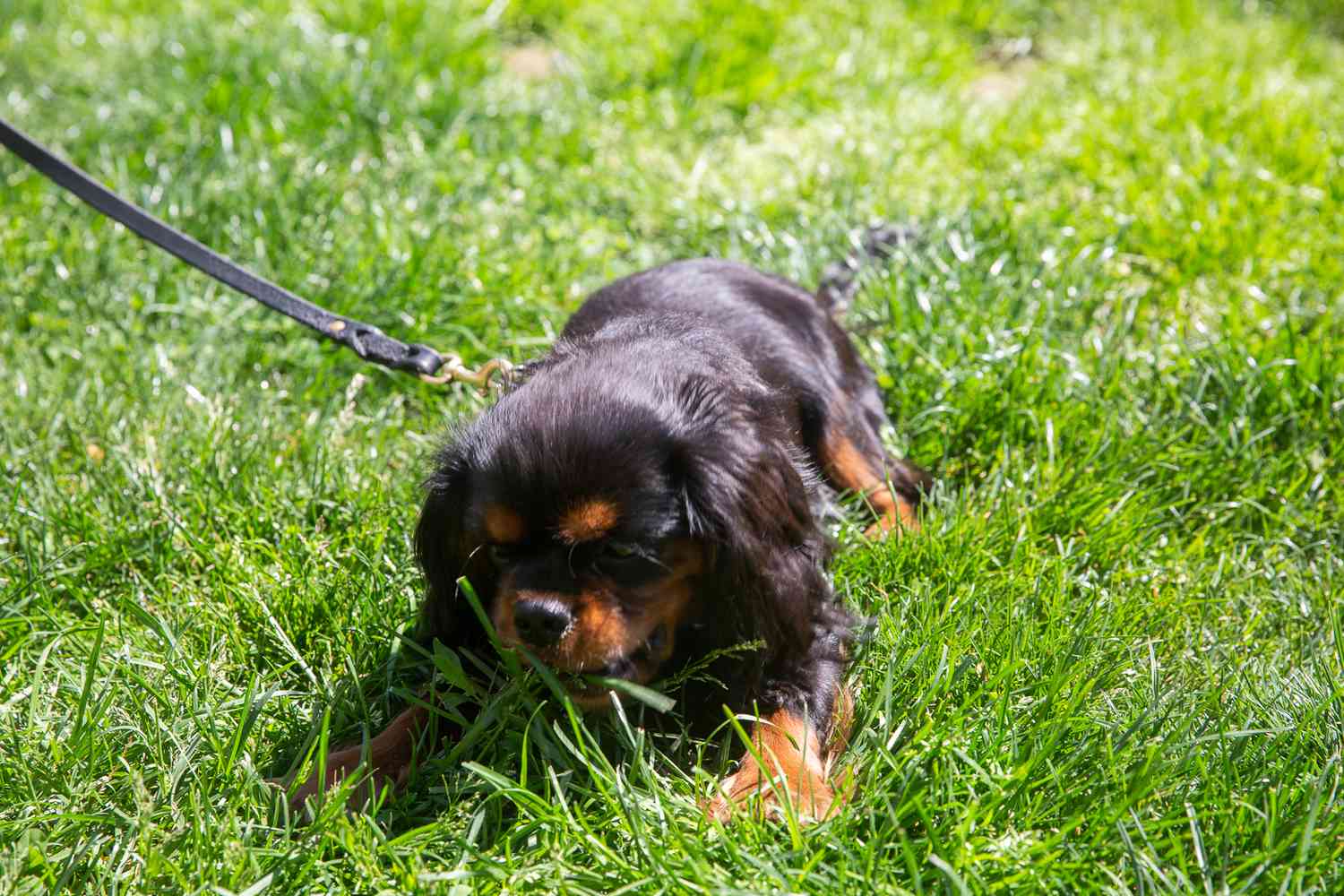
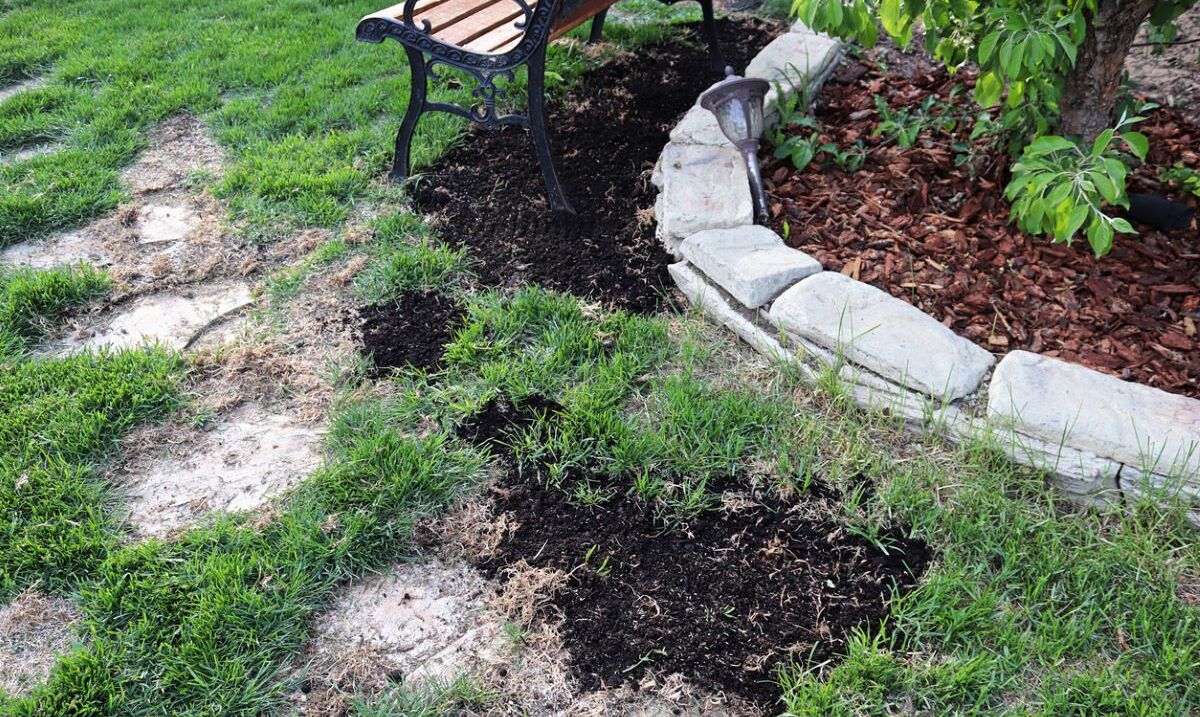
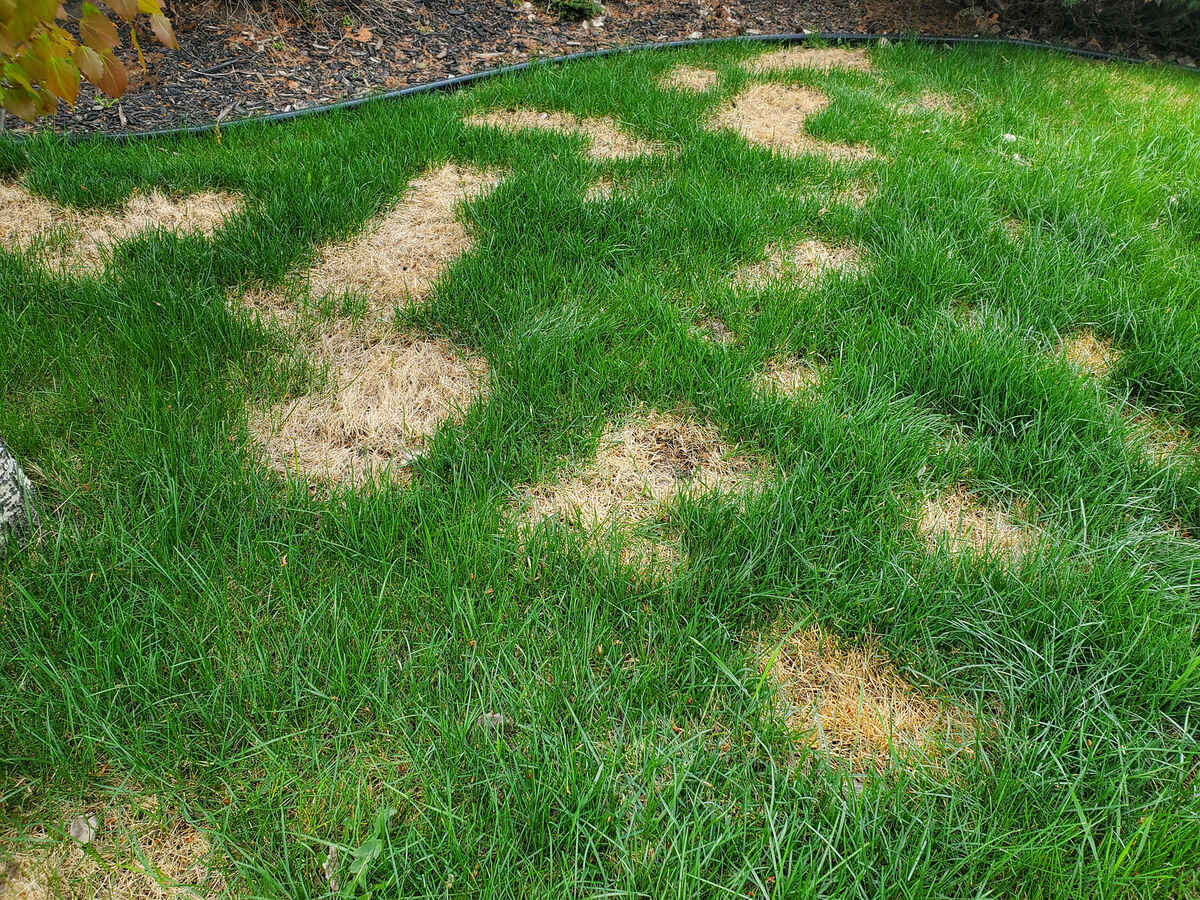
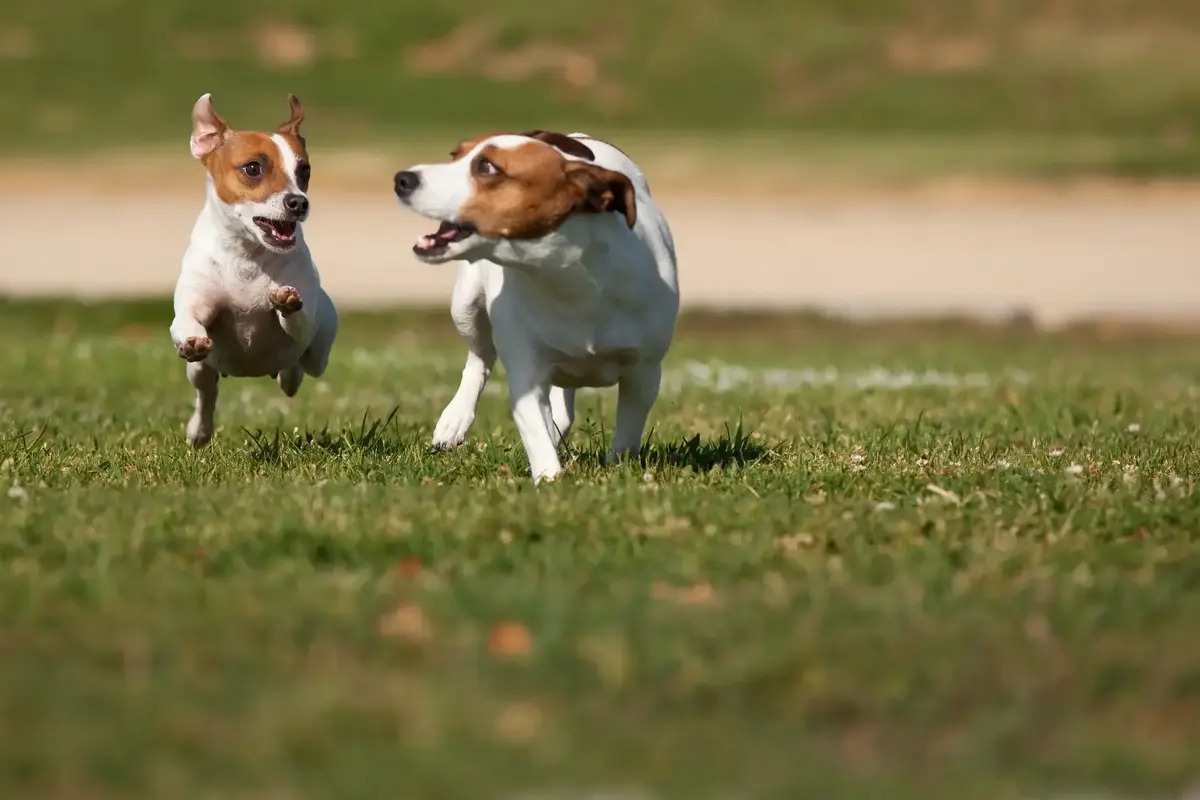
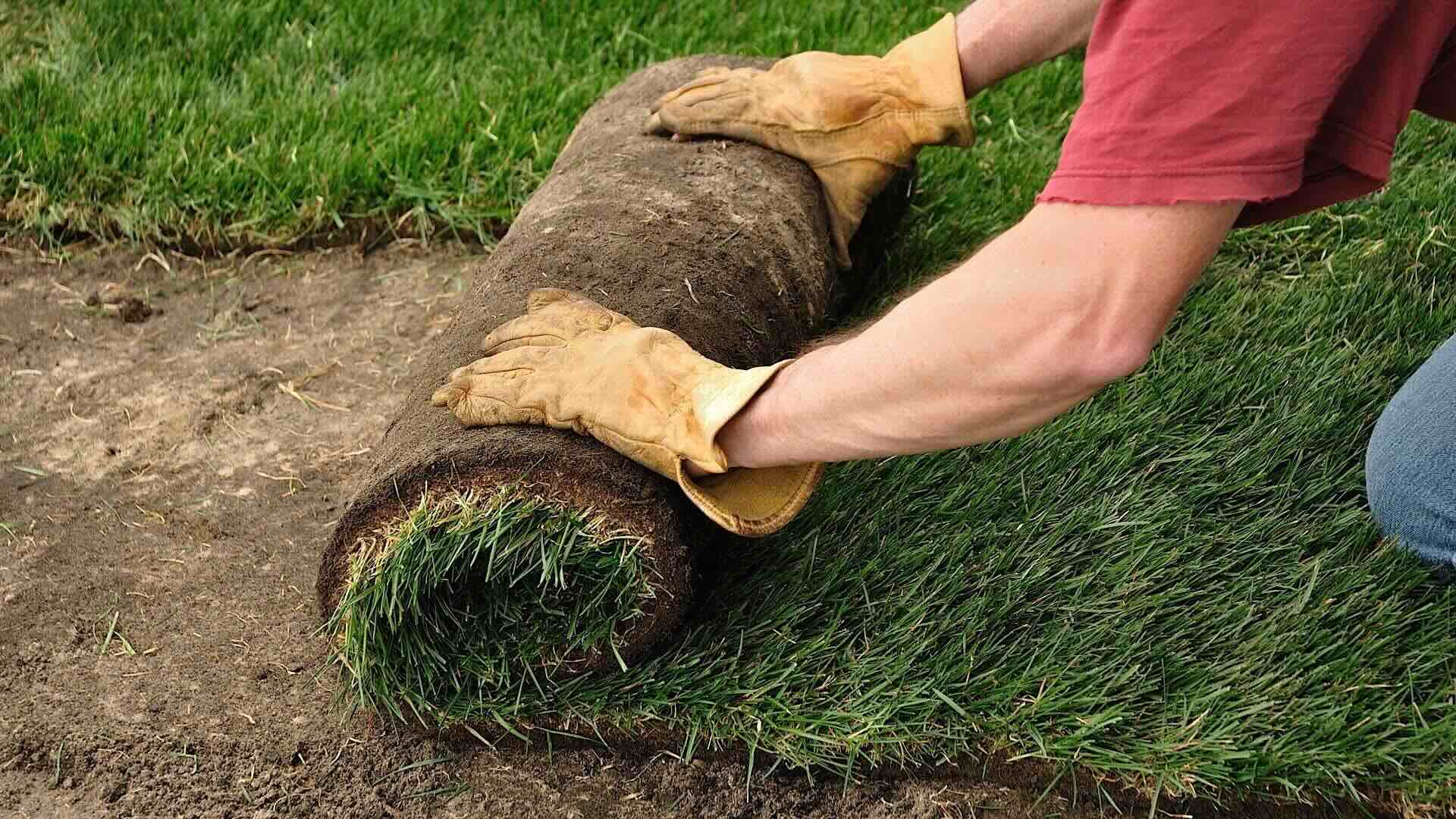
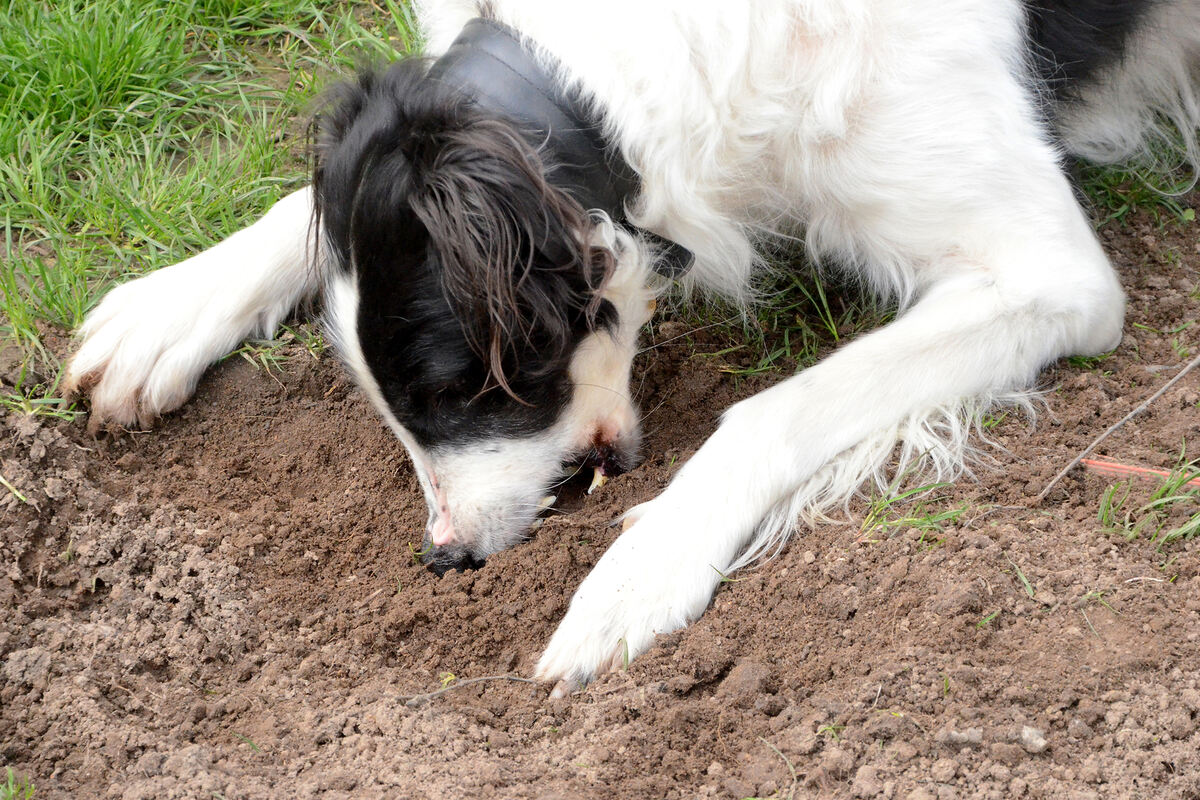

0 thoughts on “How To Train A Puppy To Pee On A Grass Pad”